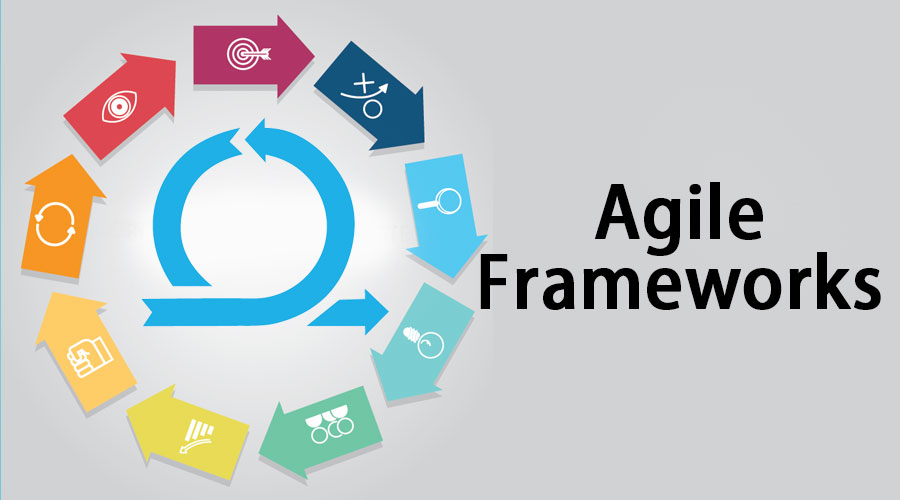Several frameworks exist within the Agile sphere, each offering its own set of practices and methodologies:
Scrum
Scrum is an Agile framework designed to facilitate collaboration, transparency, and adaptability in complex projects. It operates through time-boxed iterations known as sprints, typically lasting two weeks to a month. During each sprint, the team focuses on delivering a potentially shippable product increment. Key elements of Scrum include:
- Sprints: These are fixed time periods where the team works on a set of predefined tasks. At the end of each sprint, a potentially releasable product increment is produced.
- Daily Stand-up Meetings: Also known as daily scrums, these brief meetings allow team members to synchronize their work, discuss progress, and address any impediments. They usually last 15 minutes and are held standing up to keep them concise.
- Backlog Grooming: This involves refining and prioritizing the product backlog, which contains all the tasks, features, and enhancements to be addressed in the project. It ensures that the most valuable work is always at the forefront.
- Sprint Reviews: At the end of each sprint, a review meeting is held to demonstrate the completed work to stakeholders and gather feedback for future iterations.
Kanban
Kanban is a visual management method that originated from lean manufacturing practices. It focuses on visualizing the workflow, limiting work in progress (WIP), and enhancing overall efficiency. Key aspects of Kanban include:
- Visual Board: Work items are represented as cards on a board, which typically consists of columns representing different stages of the workflow (e.g., to-do, in progress, done). This visualization helps teams understand the status of tasks at a glance.
- Work in Progress (WIP) Limits: Kanban emphasizes setting limits on the number of tasks allowed in each stage of the workflow. This constraint prevents overburdening the team and encourages a smooth flow of work.
- Continuous Improvement: Teams using Kanban focus on incremental changes to improve the flow of work and optimize processes. Regular meetings are held to review and refine the workflow.
Extreme Programming (XP)
Extreme Programming (XP) is an Agile software development methodology that emphasizes engineering practices to ensure high-quality software and responsiveness to changing customer requirements. Key practices of XP include:
- Continuous Integration: Developers frequently integrate their code into a shared repository, ensuring that multiple changes are merged and tested continuously.
- Test-Driven Development (TDD): In TDD, developers write automated tests before writing the code itself. This approach helps in defining clear expectations for the code and ensures that the code meets those expectations.
- Pair Programming: Two programmers work together at one workstation, continuously collaborating and reviewing each other’s work. This practice enhances code quality, knowledge sharing, and problem-solving skills.
XP focuses on customer satisfaction by delivering frequent, small releases of software, emphasizing simplicity, and welcoming changing requirements throughout the development process.
Roles in Agile
In Agile methodologies, several key roles contribute to the success of a project. Each role has specific responsibilities and contributes to the collaborative and iterative nature of Agile development. Here are some of the primary roles in Agile:
- Product Owner
- Responsibilities:
- Defines the product vision and roadmap.
- Prioritizes and manages the product backlog.
- Represents the customer or stakeholder interests.
- Makes decisions on features and release planning.
- Key Skills:
- Strong communication and negotiation skills.
- Understanding of customer needs and market trends.
- Ability to make prioritization decisions.
- Responsibilities:
- Scrum Master
- Responsibilities:
- Facilitates Scrum events (sprint planning, daily stand-ups, sprint review, and retrospective).
- Removes impediments to the team’s progress.
- Ensures the Scrum framework is understood and followed.
- Acts as a servant-leader to the team.
- Key Skills:
- Strong facilitation and coaching skills.
- Servant leadership mentality.
- Problem-solving and conflict resolution skills.
- Responsibilities:
- Development Team
- Responsibilities:
- Develops and delivers increments of working software.
- Collaborates on task selection and sprint planning.
- Cross-functional members with various skills.
- Self-organizes to achieve sprint goals.
- Key Skills:
- Technical expertise related to the project.
- Collaboration and communication skills.
- Ability to adapt and contribute to a variety of tasks.
- Responsibilities:
- Stackholders
- Responsibilities:
- Provide input on requirements and priorities.
- Participate in sprint reviews to provide feedback.
- Collaborate with the team to ensure alignment with business goals.
- Key Skills:
- Clear communication of expectations and requirements.
- Availability for feedback sessions and collaboration.
- Understanding of the overall project goals.
- Responsibilities:
Testing Team
- Responsibilities:
- Plans and executes testing activities throughout the development lifecycle.
- Collaborates with the development team to understand requirements and acceptance criteria.
- Conducts various types of testing (unit testing, integration testing, system testing, and acceptance testing).
- Provides feedback to the development team on the quality of the product.
- Key Skills:
- Proficiency in various testing methodologies and tools.
- Strong analytical and problem-solving skills.
- Effective communication to convey testing results and issues.

The Agile Software Development Process
- Planning
Product Backlog:
Creating a prioritized list of features, enhancements, and tasks that need to be completed throughout the project. This backlog evolves over time, with items constantly refined and reprioritized based on changing requirements and feedback.
- Document Name: Product Backlog
- Purpose: A prioritized list of features, enhancements, and user stories that need to be addressed throughout the project. It evolves and is continuously refined based on changing requirements and feedback.
Release Planning:
Determining the scope and timeline for the upcoming iterations (sprints). This involves outlining which features or functionalities will be delivered in each iteration, considering dependencies and overall project goals.
- Document Name: Release Plan
- Purpose: Outlines the scope and timeline for upcoming iterations (sprints). It specifies which features or functionalities will be delivered in each iteration, considering dependencies and project objectives.
- Sprint Execution:
Sprint Planning:
Selecting tasks from the product backlog to be addressed in the upcoming iteration (sprint). The team discusses and commits to completing these tasks based on their capacity and priorities.
Sprint Backlog:
- Document Name: Sprint Backlog
- Purpose: Details the tasks selected from the product backlog to be completed in the current iteration (sprint). It includes specific user stories or features to be developed during the sprint.
Development:
Implementing the selected features or functionalities outlined in the sprint backlog. This phase involves coding, designing, and testing the software incrementally.
Daily Stand-ups: (Scrum Calls/Scrum Meetings)
Brief, daily meetings where team members share progress updates, discuss any obstacles, and align their efforts. These meetings are time-boxed and aim to keep the team synchronized and focused.
Continuous Integration:
Regularly merging developed code into a shared repository and conducting automated tests to ensure that new code integrates smoothly with the existing codebase. This practice maintains the project’s stability and reduces integration issues.
- Review and Feedback:
Sprint Review:
A meeting held at the end of each sprint where the team demonstrates the completed work to stakeholders, gathering feedback and insights. This helps ensure that the delivered increment aligns with stakeholder expectations.
- Document Name: Sprint Review Notes or Sprint Review Report
- Purpose: Records feedback and insights gathered during the sprint review meeting. It includes stakeholder feedback, identified issues, and action items for improvement.
Retrospective:
A session at the end of the sprint where the team reflects on their work processes, identifies what went well and what could be improved, and formulates actionable items to enhance their performance in the next sprint.
- Document Name: Retrospective Report
- Purpose: Documents findings from the retrospective meeting, highlighting what went well, what could be improved, and action items for enhancing team performance in the next sprint.
- Incremental Delivery:
Releasing Potentially Shippable Product Increment:
At the end of each sprint, the team delivers a potentially releasable product increment. This increment should meet the definition of “done,” ready for deployment, though it may not necessarily be deployed immediately. The goal is to have a functional and valuable piece of software at the end of each iteration.
- Document Name: Potentially Shippable Product Increment
- Purpose: Represents the increment of the product developed during the sprint, meeting the definition of “done.” It might include release notes or a description of the delivered features.
This sums up our Agile frameworks guide. We hope you liked our Agile frameworks guide, to stay updated with our latest posts, make sure to bookmark our blogs site.




